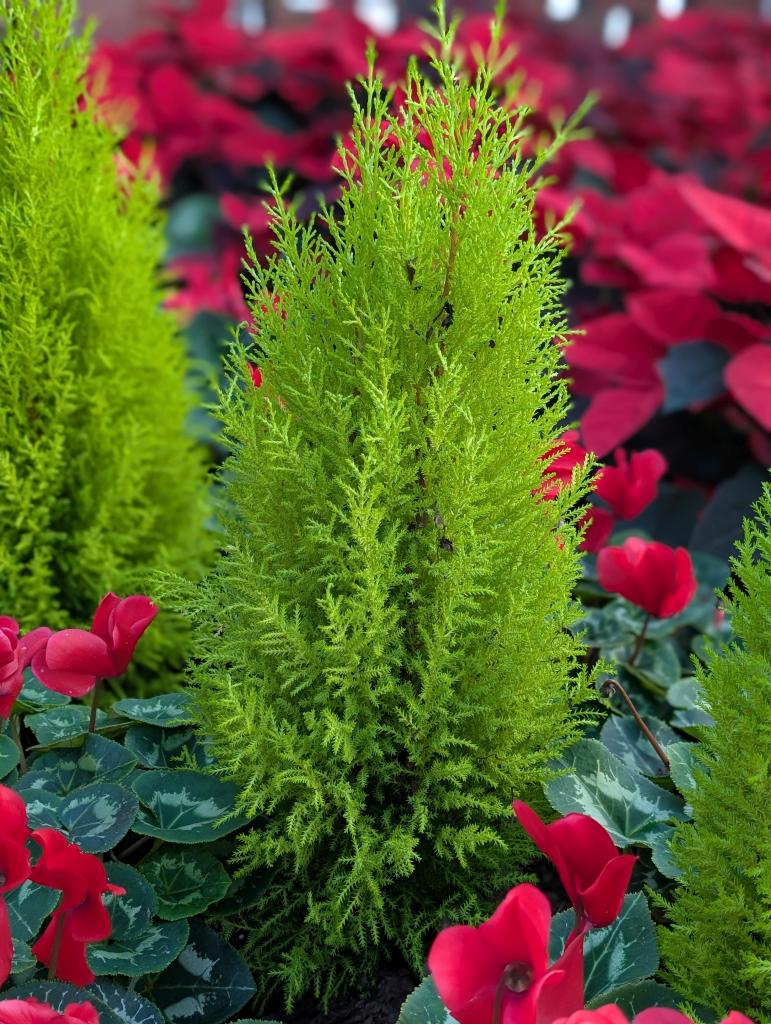
Merry Christmas


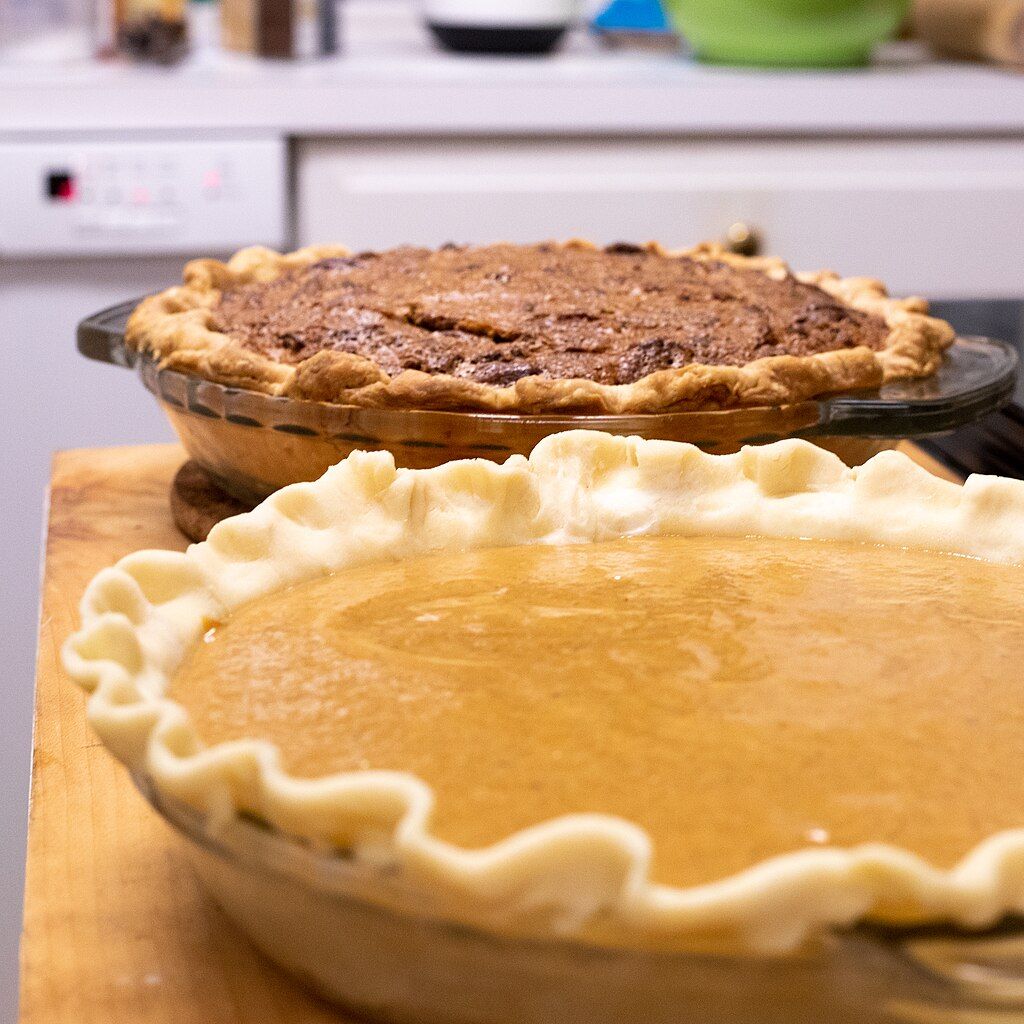
28 November 2024
Forget the Thanksgiving turkey, gravy, stuffing, mashed potatoes, sweet potatoes, green beans, cornbread, and cranberry sauce. Let’s cut to the chase and eat pie today!
So many fruits! Pumpkin, apple, berries, key lime, raisin-apple.
Mmmmm, good. Happy Thanksgiving!
photos from Wikimedia Commons, linked in the list of fruits. p.s. …
A pumpkin, from a botanist‘s perspective, is a fruit because it’s a product of the seed-bearing structure of flowering plants. Vegetables, on the other hand, are the edible portion of plants such as leaves, stems, roots, bulbs, flowers, and tubers. Because pumpkins are less sweet and more savory from a culinary perspective, we categorize them as a vegetable.
— FruitsandVeggies.org: Are pumpkins a fruit or a vegetable? What is the difference between the two?
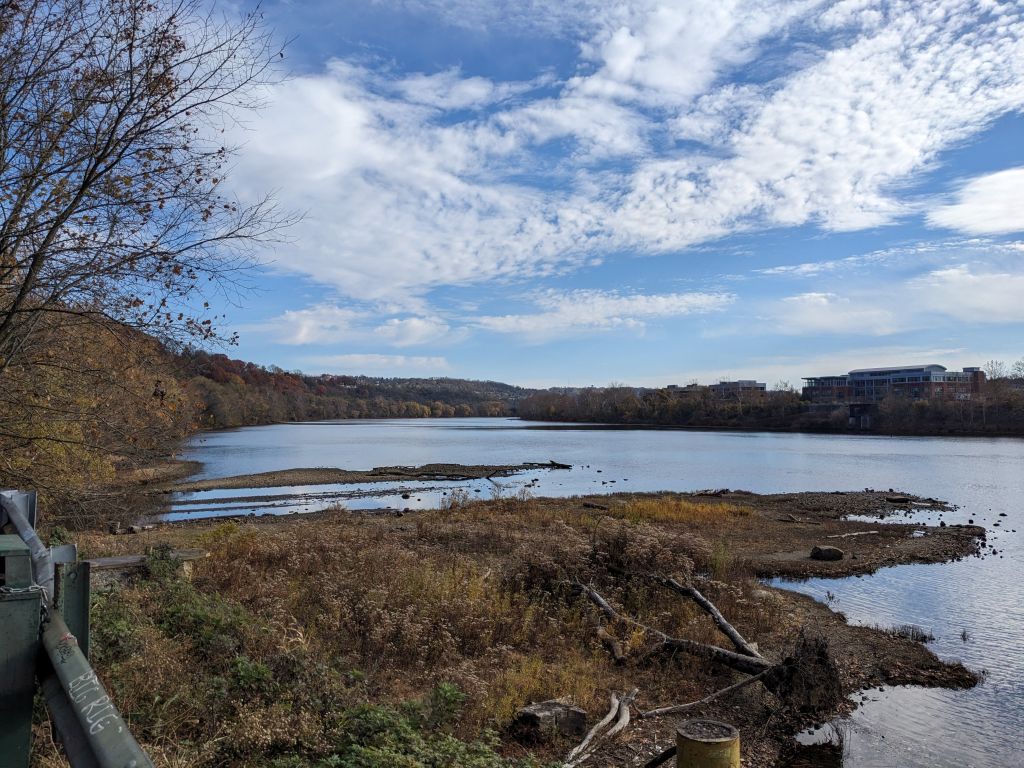
18 Nov 2024
In the Old Days 20 years ago, freezing weather would sweep across Canada in late October bringing migratory ducks to Pennsylvania in early November. But our climate has warmed and the ducks come later now. As of yesterday, they hadn’t made it to Duck Hollow yet.
This might be the week the ducks arrive. On Thursday the temperature will drop 20°F when a strong low pressure system brings widespread precipitation, strong wind gusts and possibly wet snow north of Pittsburgh. (NWS says of the forecast: “There is still a great deal of uncertainty right now.”)
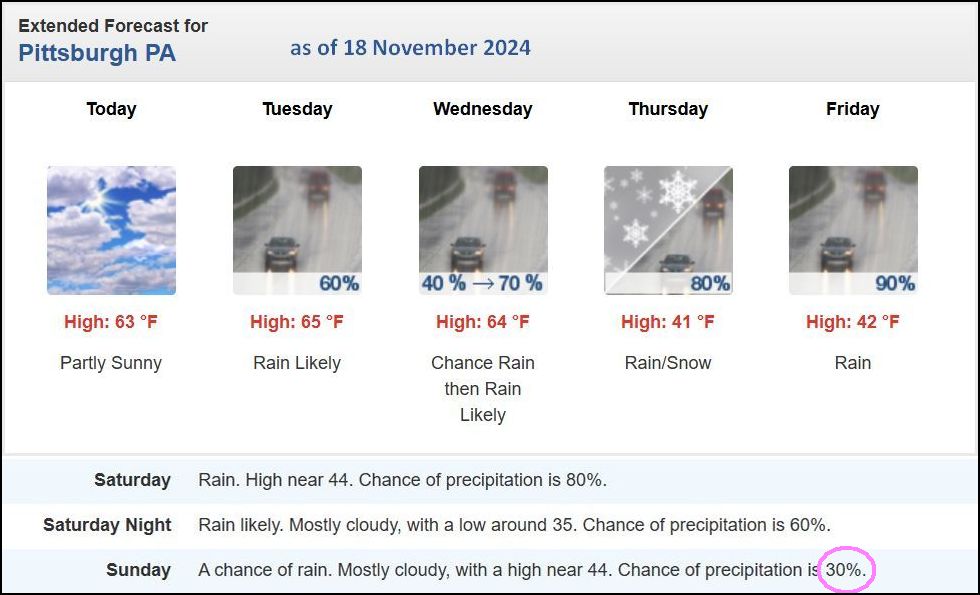
By Sunday the weather may be good enough to check for ducks. So, weather permitting, join me at Duck Hollow on Sunday 24 November 2024, 8:30am to 10:30am for a bird and nature walk.
Meet at the Duck Hollow parking lot at the end of Old Browns Hill Road. Bundle up for the weather and wear comfortable walking shoes.
I hope we’ll see our one exception to “no ducks yet.” For more than a month a flock of 6-7 common mergansers has been hanging out at Duck Hollow. When they arrived in early October they were all in eclipse plumage but in the past two weeks at least one of them is molting in adult male breeding plumage.
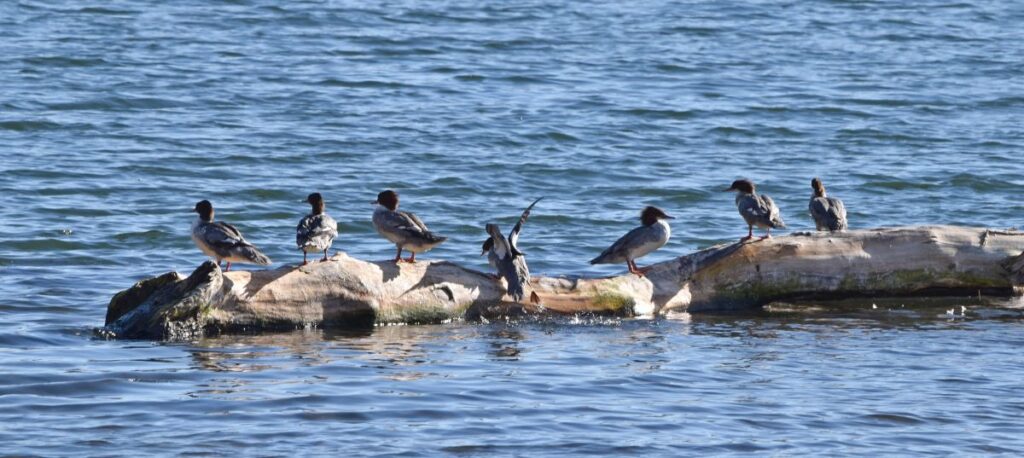
Looking forward to next Sunday. Fingers crossed about the weather.

10 November 2024
It’s time to celebrate and I almost missed it! Fortunately the crows reminded me that …
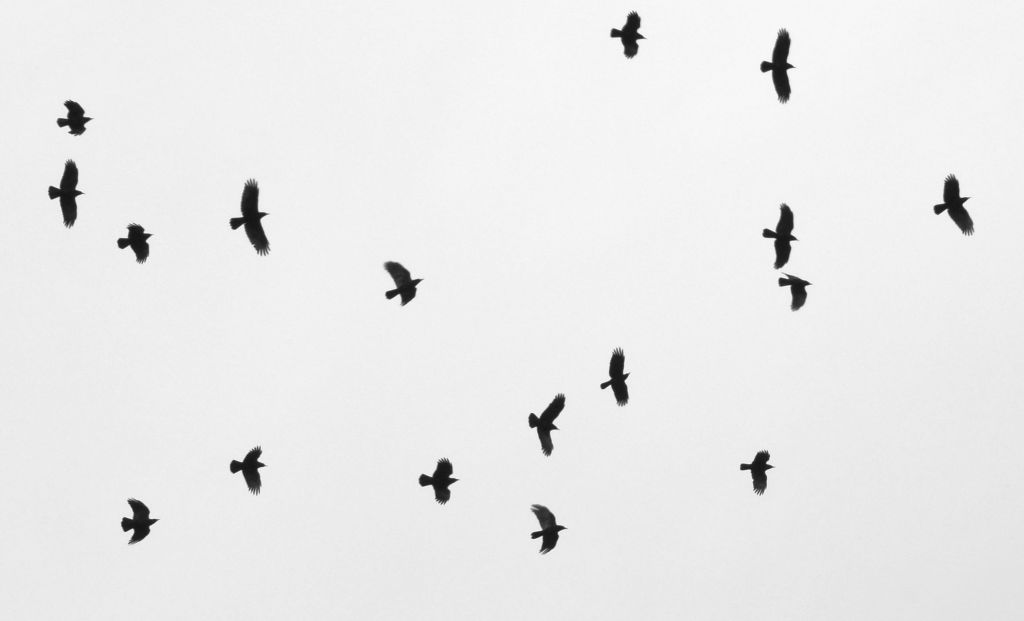
Seventeen years ago yesterday, 9 November 2007, I published the first blog post of my blogging “career.”
As of this morning I’ve written 6,282 articles but not all of them are winners. On the blog’s anniversary I look for the most popular articles in the last 12 months.
One Day Wonders: These Top 5 posts caused the biggest single day surge in viewers. Click the links if you haven’t read them.
Old Faithfuls: Which articles steadily gather the most attention? Two articles had more than 12,000 viewers in the past 12 months.
I think some (maybe most?) people searching for this title were disappointed to find it’s not about a human invasion. It’s about spotted lanternflies.
This article was a joke about the resemblance of the Devils Tower to a large petrified tree stump. I am surprised that viewers are still drawn in year after year.
Daily readership hums along at 700-800 readers (YOU!) and soars to a new record of 7,200 viewers in unexpected ways.
Thank you, my readers, for your enthusiasm. I couldn’t have blogged every day for 17 years without you. And a big thank you to all the photographers who let me use your photos. I’ve made a lot of new friends.
Happy Bird-thday, Outside My Window!
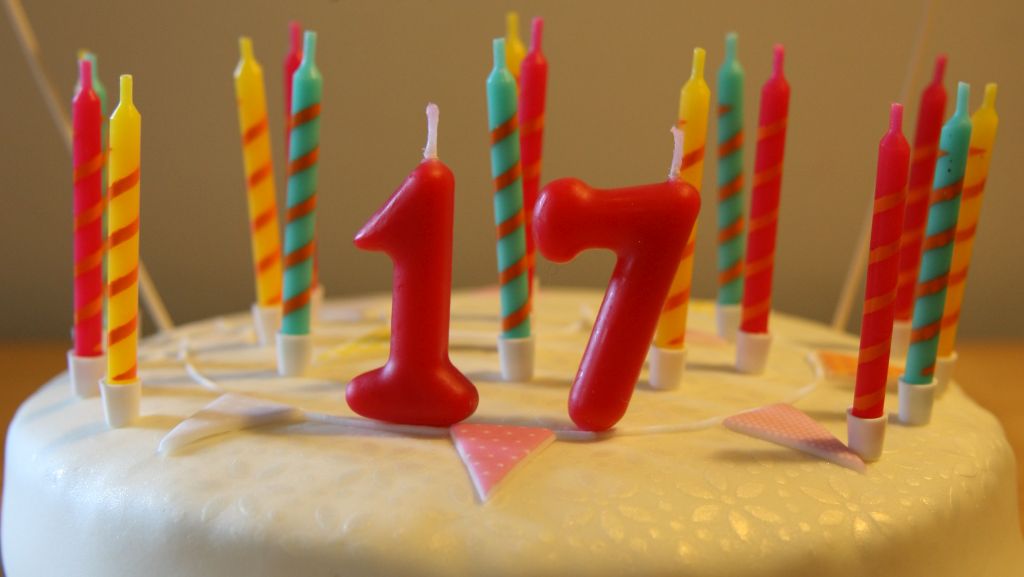
p.s. This is my blog’s birthday, not my birthday. I’m a heck-uv-a lot older than 17!
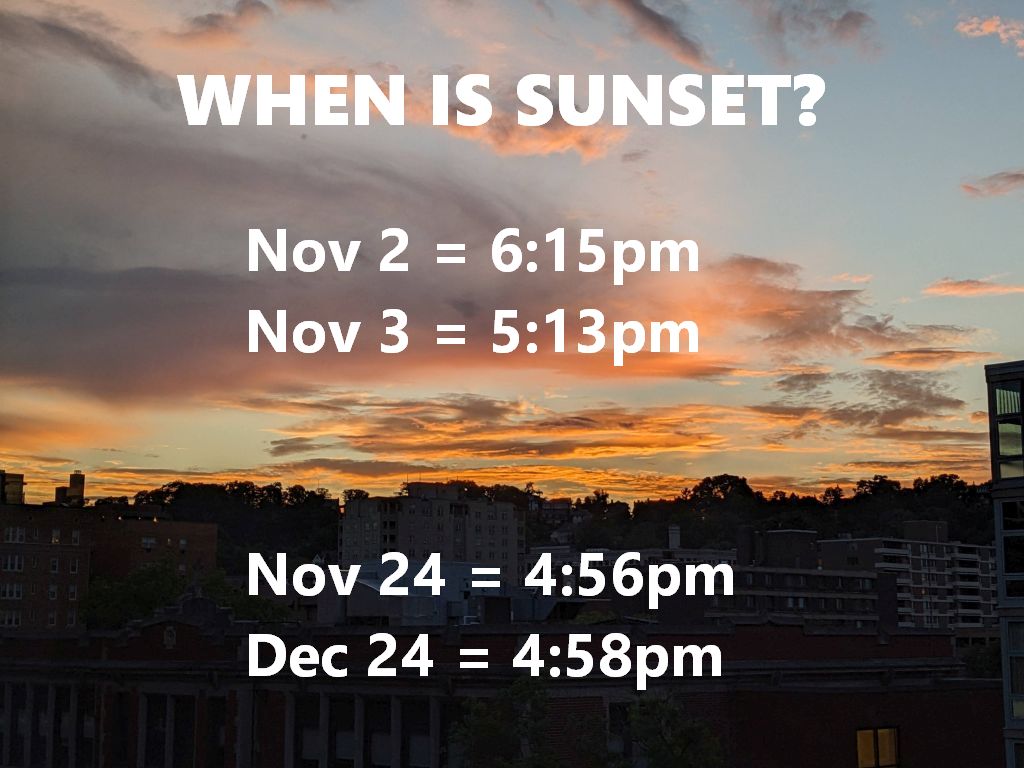
2 November 2024
Spring Forward, Fall Back. Daylight Saving Time ends tonight as our clocks turn back an hour. Tomorrow the sun will set an hour earlier. A lot of us will be grumpy. Some will be depressed.
Most Americans agree that changing the clocks is bad.
Numerous polls have found that most Americans believe that a standard time should be fixed and permanent—as many as 75% favor no longer changing clocks twice per year. One of the most common observations among researchers of varying backgrounds is that the change itself causes most of the negative effects, more so than either standard time or daylight saving time. Researchers have observed numerous ill effects of the annual transitions, including reduced worker productivity, increased heart attacks and strokes, increased medical errors, and increased traffic incidents.
— Wikipedia: SP Act Debate
There are places that don’t participate in this dreaded exercise: Arizona, Hawaii, Puerto Rico and other U.S. island territories.
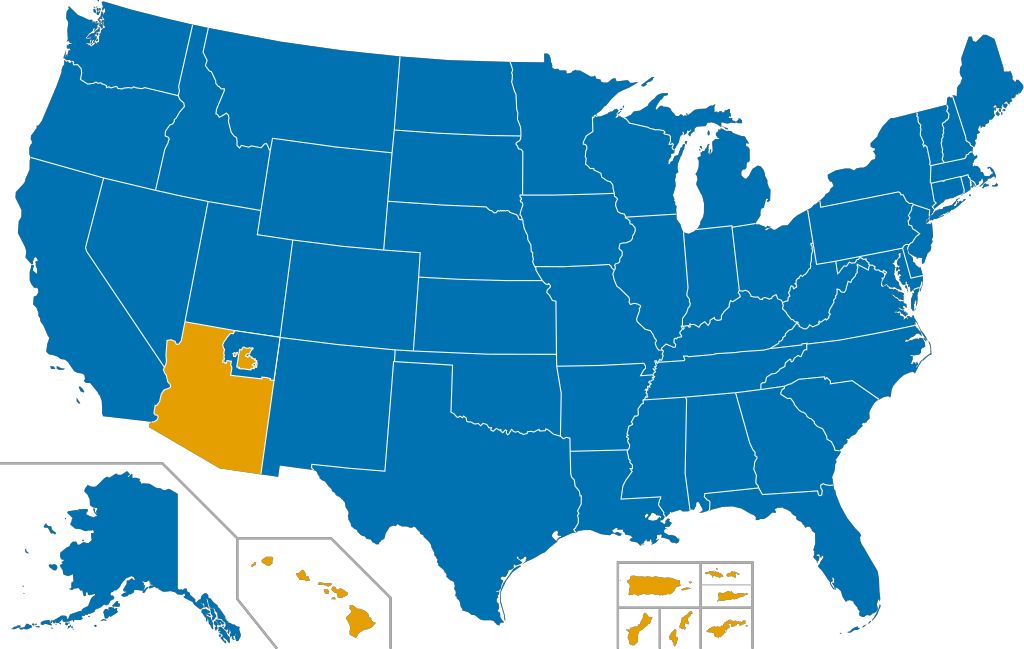
But there is an area in northeastern Arizona of self-governed indigenous tribal land where part of it uses Daylight Saving Time (DST) and the center does not. The DST area is the Navajo Nation which spans three states and has chosen to use DST. The donut hole is the Hopi Reservation that uses Standard Time. Here’s a closer look.
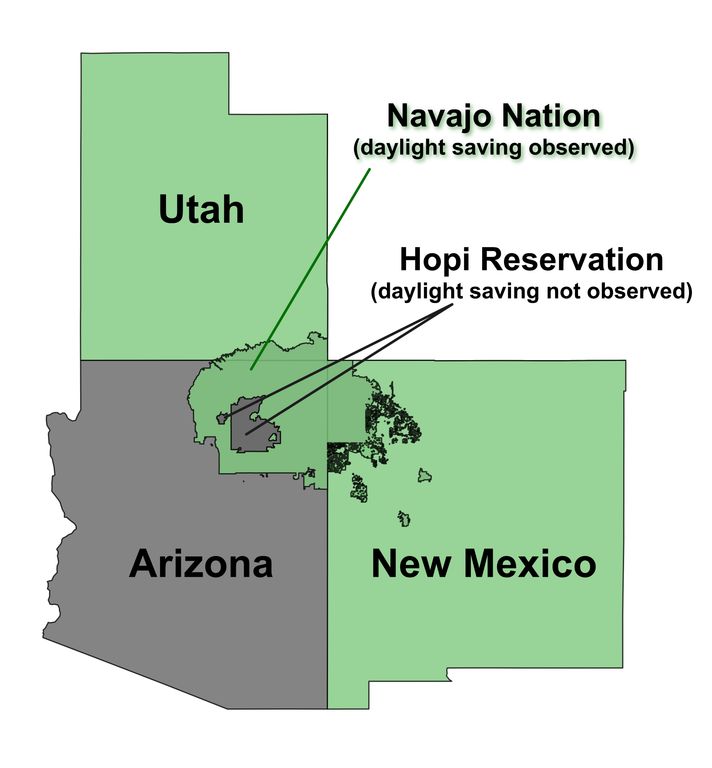
If you drive from Tusayan, AZ to Tuba City to Ganado to Window Rock in March through October, you will change time zones seven times between Standard Time and DST. (Did I count correctly?) People who have to make that trip will be relieved that everyone is on Standard Time tomorrow.
Changing your clocks: Everything connected to the Internet — mobile phones, etc. — will change automatically at 2:00am Sunday. The rest of the clocks are up to us.
p.s. I wonder what happens to a cellphone on the trip from Tusayan to Window Rock during DST.
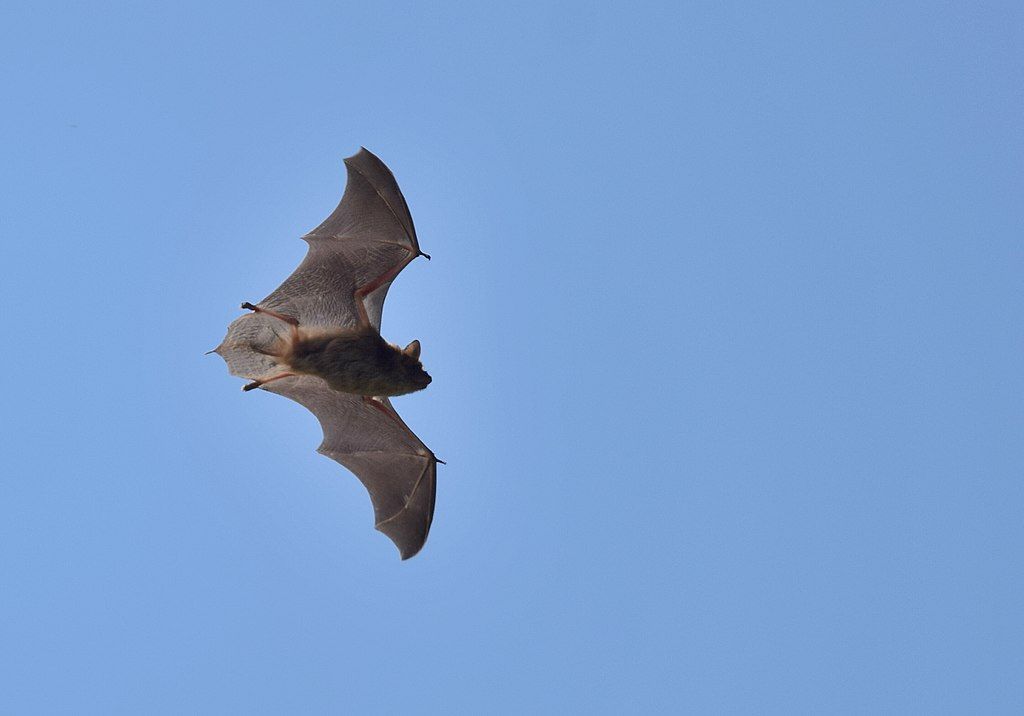
31 October 2024
On Halloween 2008 I came across a small bat roosting on a tree in Schenley Park, described in A Bat on Halloween. Every time I pass the tree, especially on Halloween, I look for a bat but the chances of finding one are slim to none.
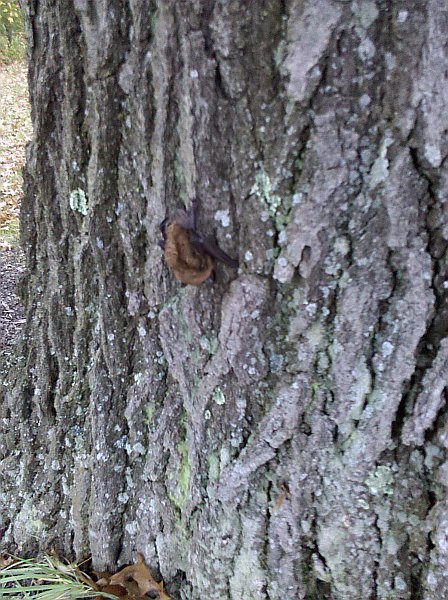
Little brown bats (Myotis lucifugus) used to be one of the most common bats in North America but their population in the Northeast has declined 90% since 2006 because of white nose syndrome (WNS), a disease caused by a European fungus that was accidentally introduced by cave explorers near Albany, NY.
The fungus spreads rapidly. It was confirmed county by county in southwestern PA in 2010, 2011 and 2012 and now it spans the continent. Little brown bats were listed as Endangered by the IUCN in 2021.
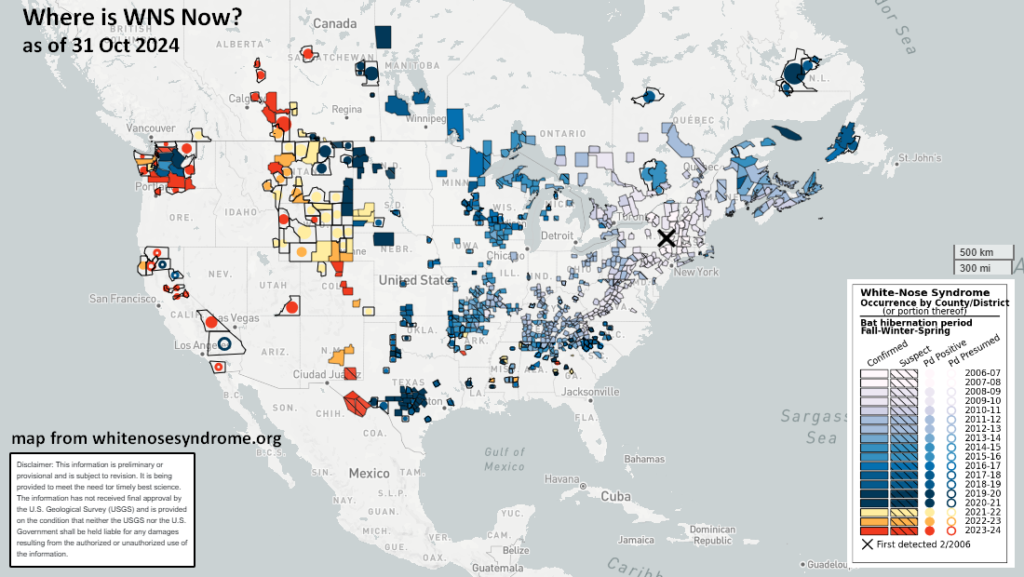
There are far fewer bats in Pennsylvania this Halloween than there were 16 years ago. It is unlikely that I will ever see a little brown bat in daylight again.
Read more about white nose syndrome at Another Alien Invader and whitenosesyndrome.org.
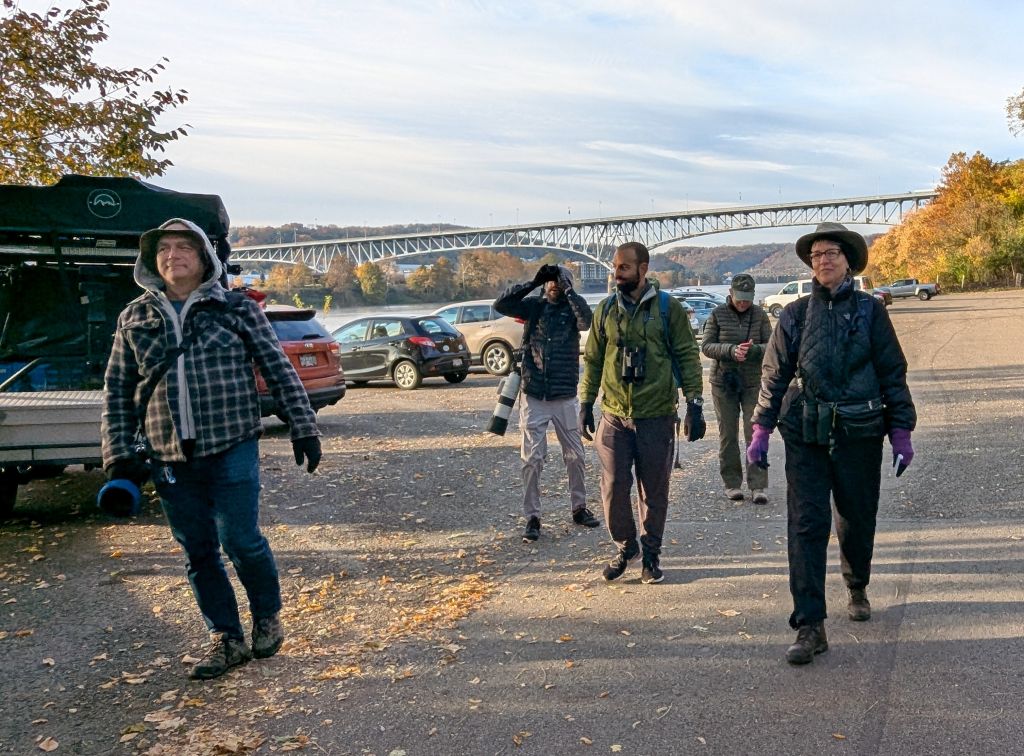
28 October 2024
Six of us went birding yesterday at Duck Hollow and we didn’t just stand around. Here we are on the move to look in the thickets.
Before the rest of us arrived, Claire Staples captured this image of sky, sun and fog on the Monongahela River at 7:55am.
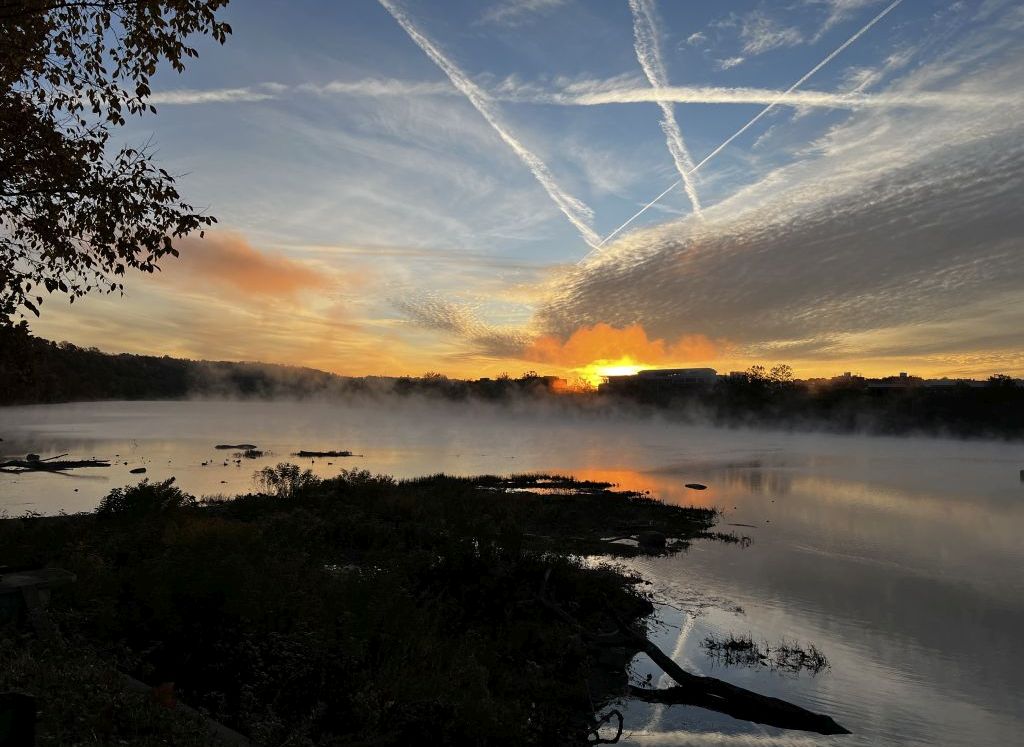
As 8:36am the sky cleared a bit. Two contrails make dogleg turns to the north.

Our Best Bird skulked in a thicket, of course, but kept making noise. He soon became the most photographed bird of the day: a winter wren in shadow and then in the open.


Duck Hollow’s northern mockingbird is still present and noisy.
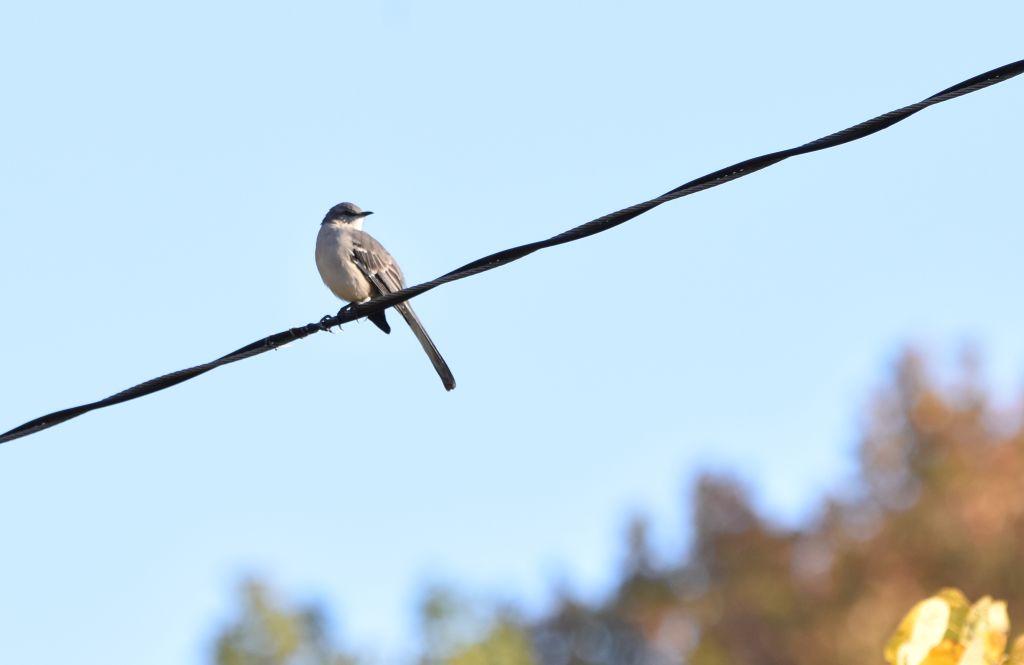
We found a bumper crop of honeysuckle fruit along the Lower Nine Mile Run Trail.
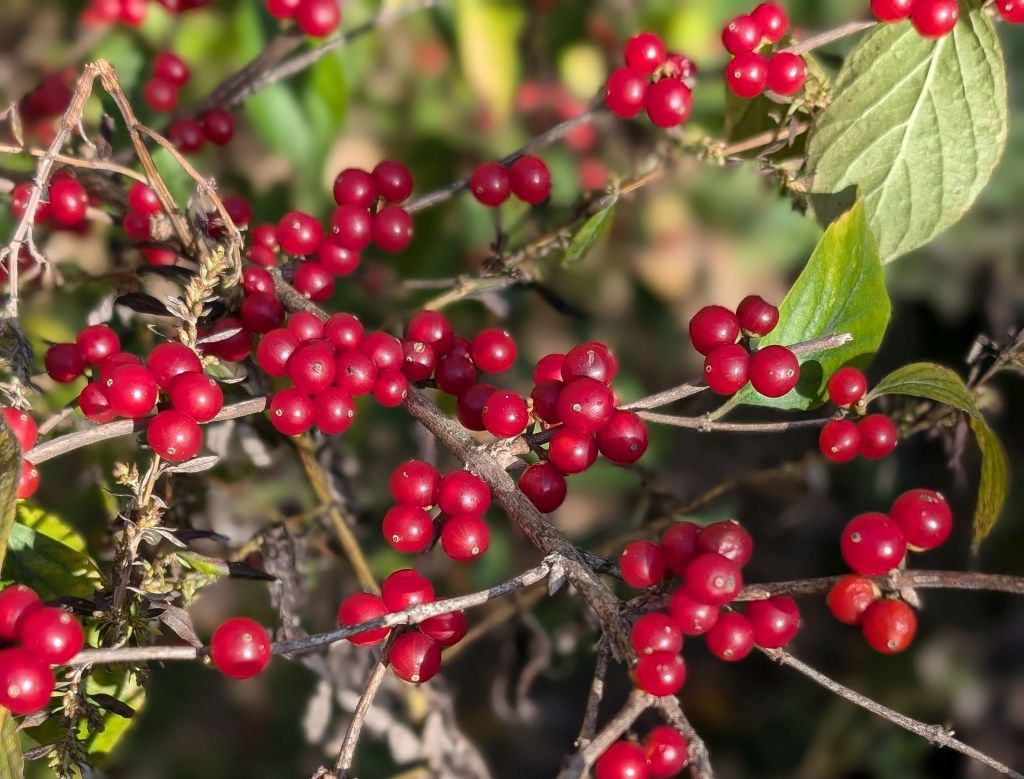
Unfortunately …
Invasive honeysuckle berries aren’t strictly bad for birds. They’re an easy food source when birds are in a pinch, but they’re kind of like junk food: Compared to native berries, they have less fat and nutrients that birds need to fuel their long-distance flights.
— Audubon news: Mystery Solved: Invasive Berries to Blame for Turning Flickers’ Feathers Pink
Our “rare” bird of the day was a flock of 16 fish crows vocalizing as they flew. eBird didn’t believe we could find that many but eBird’s “rare” filter doesn’t know about, or cannot pointpoint, the fish crow phenomenon in Pittsburgh’s East End.
See our checklist of 27 species here https://ebird.org/checklist/S200489956 and below.
Duck Hollow, Allegheny, Pennsylvania, US
Oct 27, 2024 8:30 AM – 10:30 AM … 27 species
Canada Goose (Branta canadensis) 26
Mallard (Anas platyrhynchos) 11
Mourning Dove (Zenaida macroura) 3
Killdeer (Charadrius vociferus) 4
Great Blue Heron (Ardea herodias) 2
Belted Kingfisher (Megaceryle alcyon) 2
Red-bellied Woodpecker (Melanerpes carolinus) 1
Downy Woodpecker (Dryobates pubescens) 3
Northern Flicker (Colaptes auratus) 1
Blue Jay (Cyanocitta cristata) 10
American Crow (Corvus brachyrhynchos) 6
Fish Crow (Corvus ossifragus) 16 Flock heading south for the Waterfront shopping center, vocalizing on their way
Carolina Chickadee (Poecile carolinensis) 2
Golden-crowned Kinglet (Regulus satrapa) 1
Winter Wren (Troglodytes hiemalis) 1
Carolina Wren (Thryothorus ludovicianus) 2
European Starling (Sturnus vulgaris) 8
Northern Mockingbird (Mimus polyglottos) 1
American Robin (Turdus migratorius) 60
Cedar Waxwing (Bombycilla cedrorum) 30
House Finch (Haemorhous mexicanus) 13
American Goldfinch (Spinus tristis) 2
Dark-eyed Junco (Junco hyemalis) 4
White-throated Sparrow (Zonotrichia albicollis) 10
Song Sparrow (Melospiza melodia) 6
Yellow-rumped Warbler (Setophaga coronata) 10
Northern Cardinal (Cardinalis cardinalis) 10

22 October 2024
Last month’s outing was rained out by the remnants of Hurricane Helene so I’m going to try again …
Join me at Duck Hollow on Sunday 27 October 2024, 8:30am to 10:30am for a bird and nature walk.
Meet at the Duck Hollow parking lot at the end of Old Browns Hill Road. Dress for the weather and wear comfortable walking shoes. Bring binoculars, field guides and a birding scope if you have them.
When I stopped by there yesterday I saw only two mallards(!) but there were three golden-crowned kinglets similar to this one, photographed by Charity Kheshgi last year.
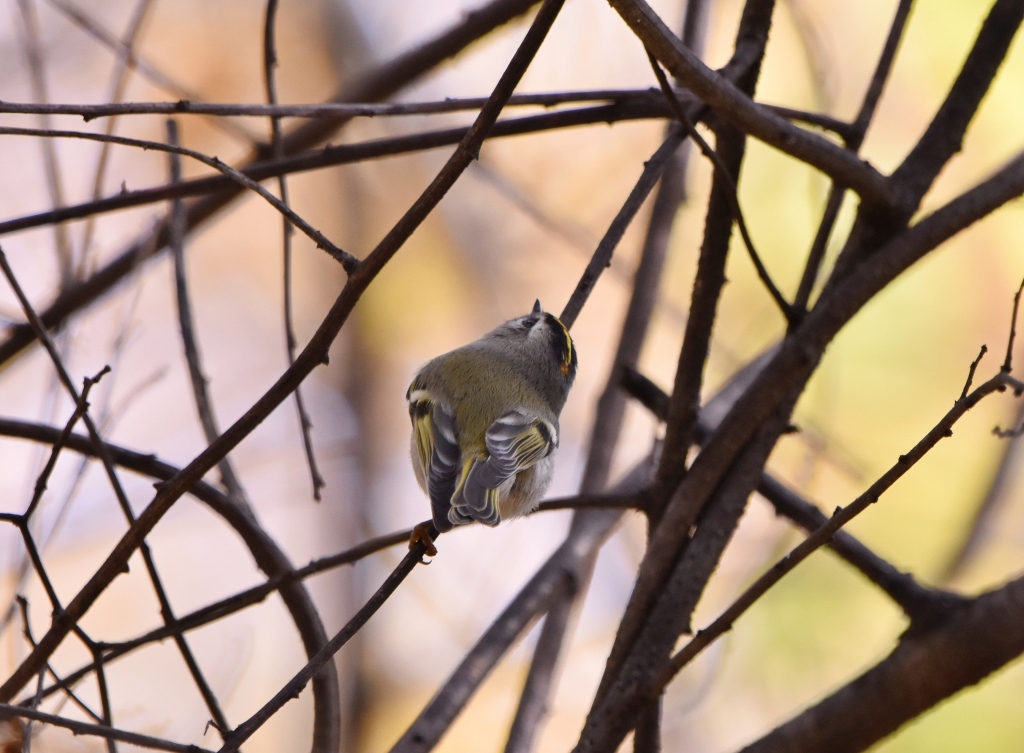
As always, remember to check the Events page before you come in case of changes or cancellations!
What Best Bird will show up next Sunday? Come to Duck Hollow and see.
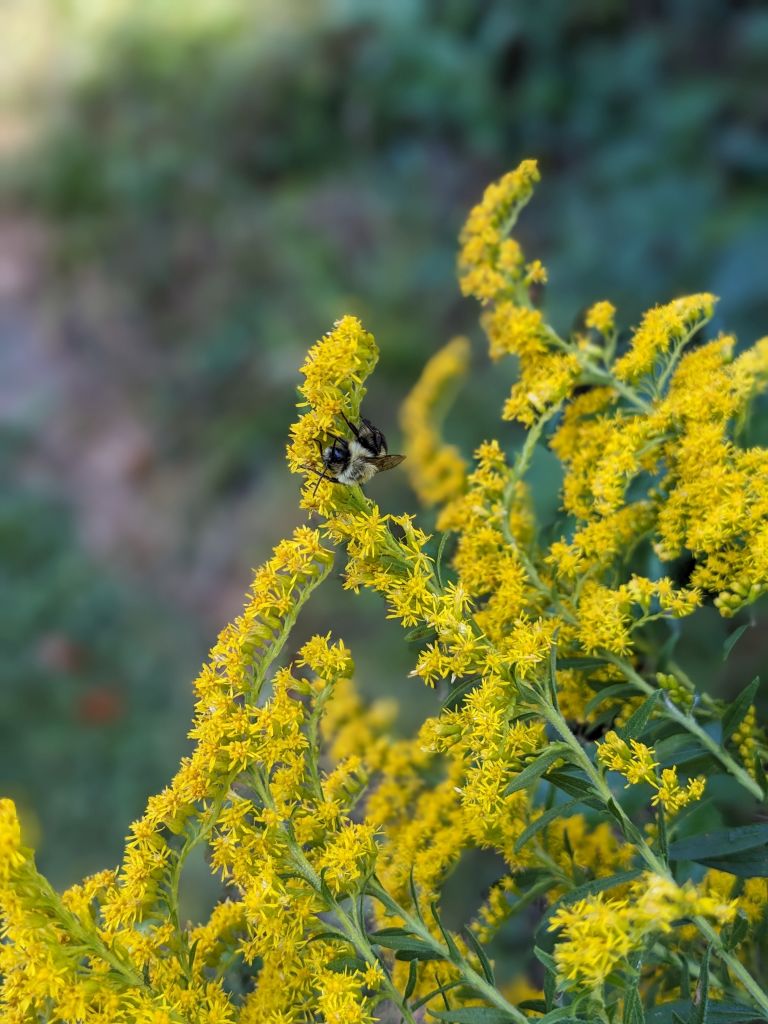
23 September 2024
Next Sunday we’re heading back to Frick Park at Commercial Street to avoid Forbes and Fifth Avenue road closures during Pittsburgh’s Great Race. Don’t miss maps and instructions at end.
Join me for a bird & nature walk in Frick Park on Sunday, 29 September 2024, 8:30a – 10:30a. Meet at the Nine Mile Run Trail Parking lot on Commercial Street.
We’re sure to see fruits, seeds, goldenrod and bees as we check out Nature’s activity near the trailhead on our way to the boardwalk.
Last Saturday in Frick Park Charity Kheshgi and I saw Swainson’s thrushes and six species of warblers (checklist here). The mix of migratory species will change by the time we reach Frick next Sunday but I can promise blue jays and red-bellied woodpeckers. Both have a lot of personality.
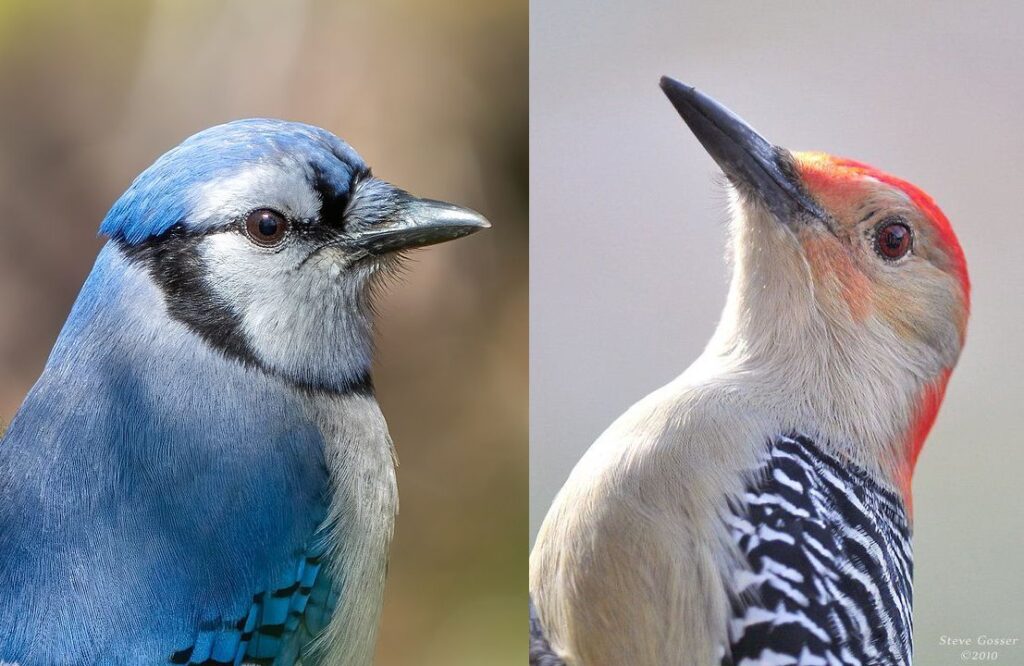
Dress for the weather and wear comfortable walking shoes. Bring binoculars and field guides if you have them.
Visit my Events page before you come in case of changes or cancellations.
The Great Race will close Fifth Avenue from Bigelow Blvd to Downtown at 6:30am (corner of Soldiers & Sailors and Cathderal of Learning). Forbes and Fifth-at-Bigelow will close at 8:30am. CLICK HERE FOR THE OFFICIAL RACE and ROAD CLOSURE MAP.
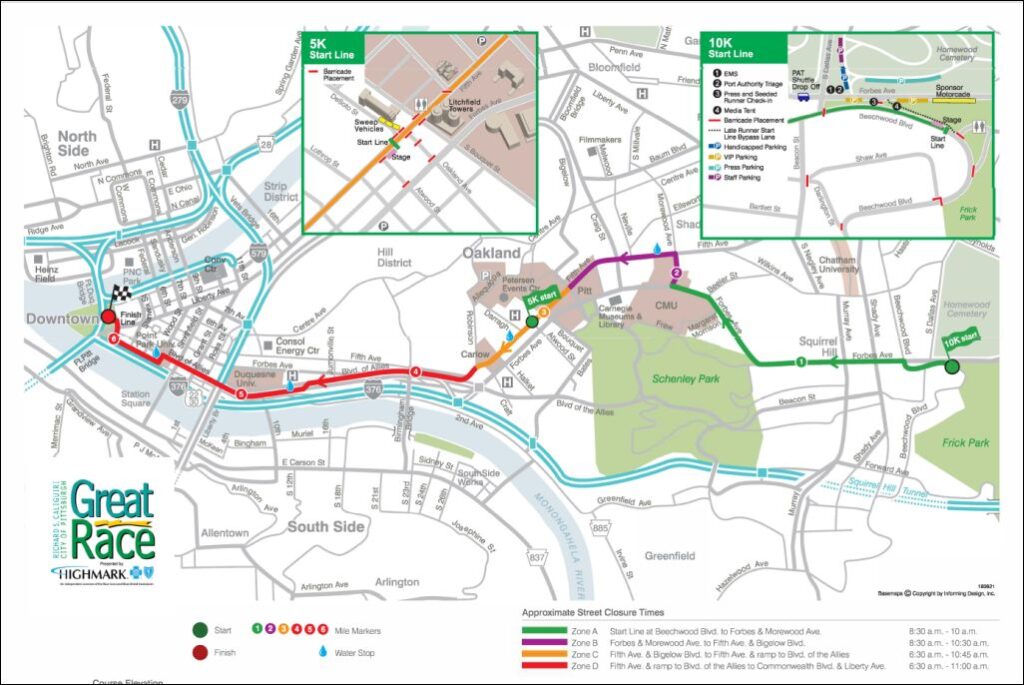
The parking lot is circled on the map below. NOTE: If you park in one of the small dirt lots near a Frick Park entry gate, cross the road and walk under the arching Parkway Bridge to join us. See map and photo below.
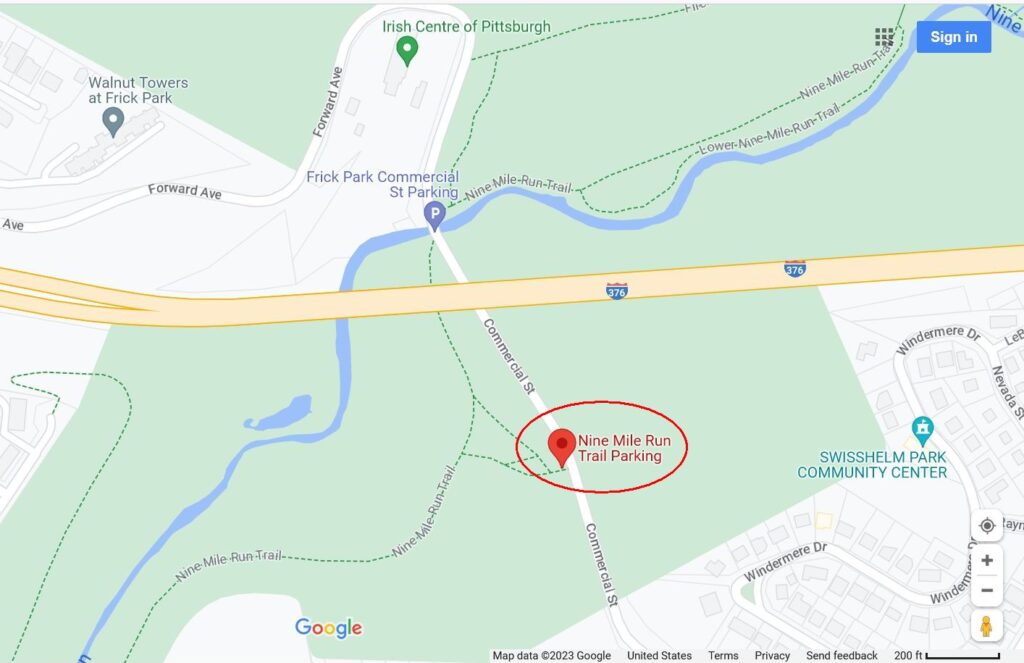
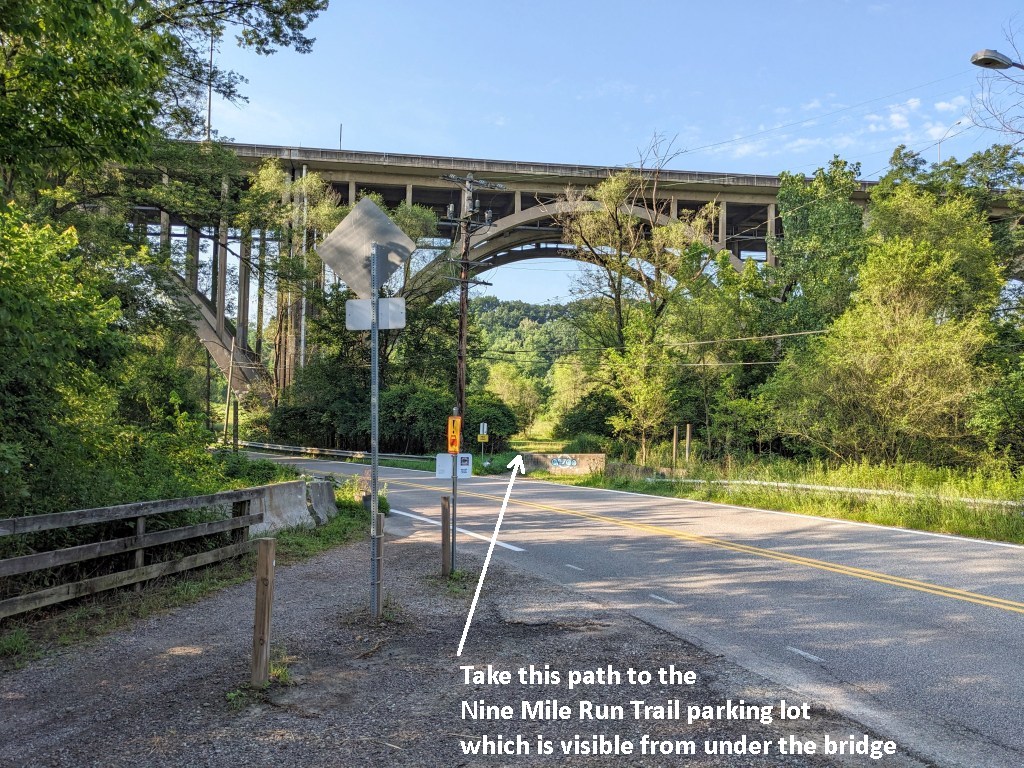
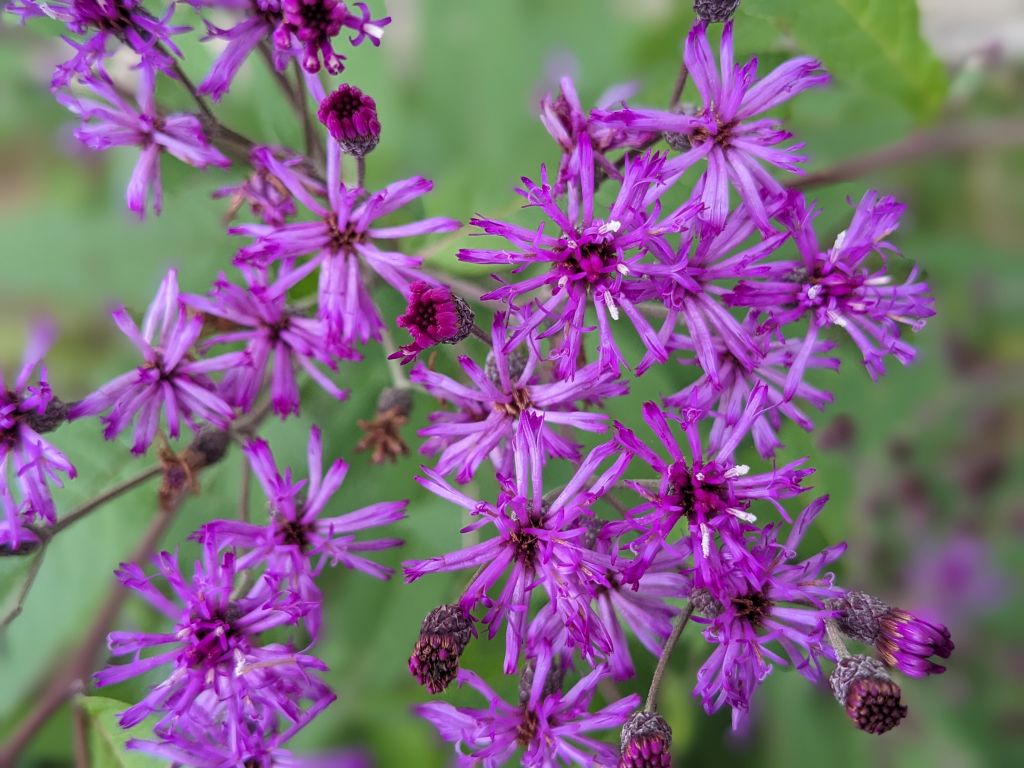
19 August 2024
Late summer flowers are blooming, bugs are buzzing, and the first migrating birds are on the move.
Join me for a bird & nature walk in Schenley Park on Sunday, 25 August 2024, 8:30a – 10:30a. Meet at the Schenley Park Cafe and Visitor Center where Panther Hollow Road joins Schenley Drive.
I know we’ll hear True Bugs whirring, see lots of flowers, and encounter Carolina wrens and goldfinches.
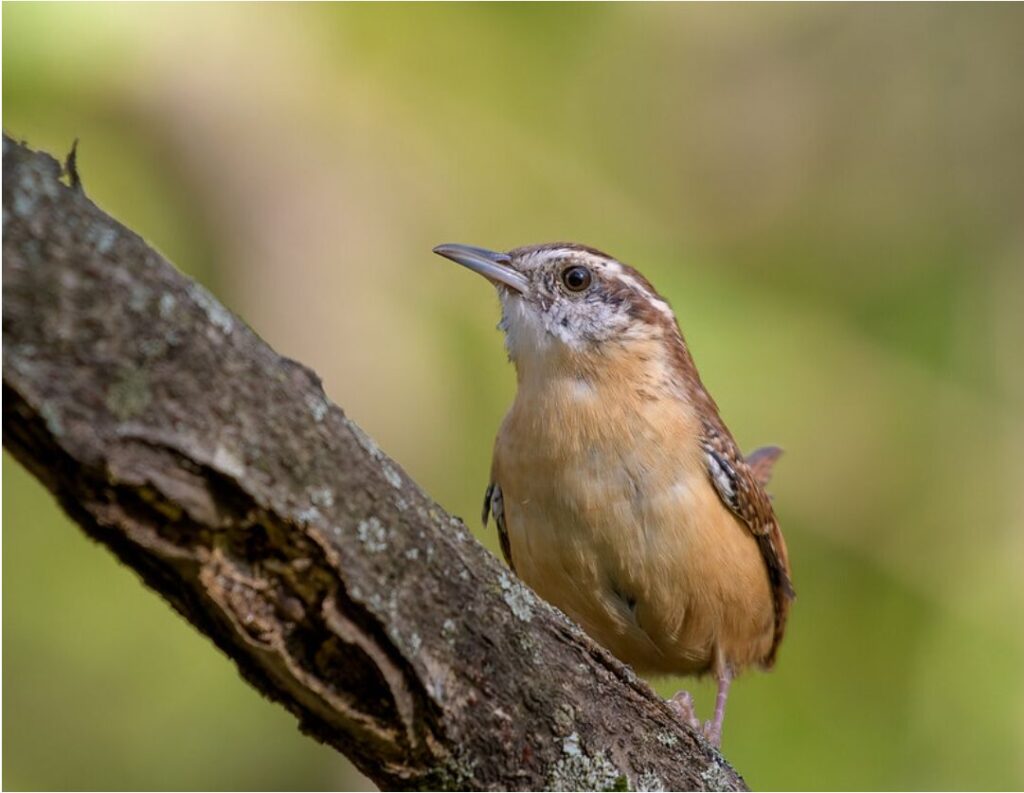
Dress for the weather and wear comfortable walking shoes. Bring binoculars and field guides if you have them. If it’s hot be sure to bring water, sunscreen and a hat.
Visit my Events page before you come in case of changes or cancellations. The outing will be canceled if there’s lightning or heavy downpours.
Hope to see you there!
(photos by Christopher T and Kate St. John)